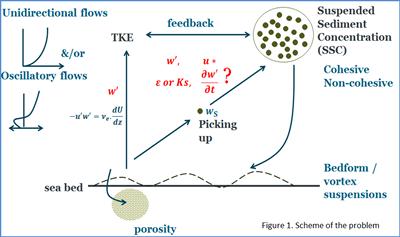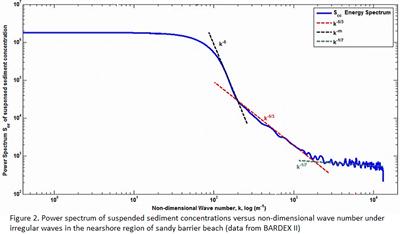Research project: Vertical turbulence structures in the benthic boundary layer as related to suspended sediment
The Rouse profile is used to model the vertical distribution of suspended sediments. It considers that settling of individual grains towards the bed would be balanced by upward diffusion induced by vertical turbulent motions in the boundary layer. However, the underlying assumptions of this model, particularly in terms of vertical turbulence structure, are disputed in the literature (e.g. Grant and Madsen, 1986), and its validity has been contested by field results (e.g. Amos et al, 2010).


